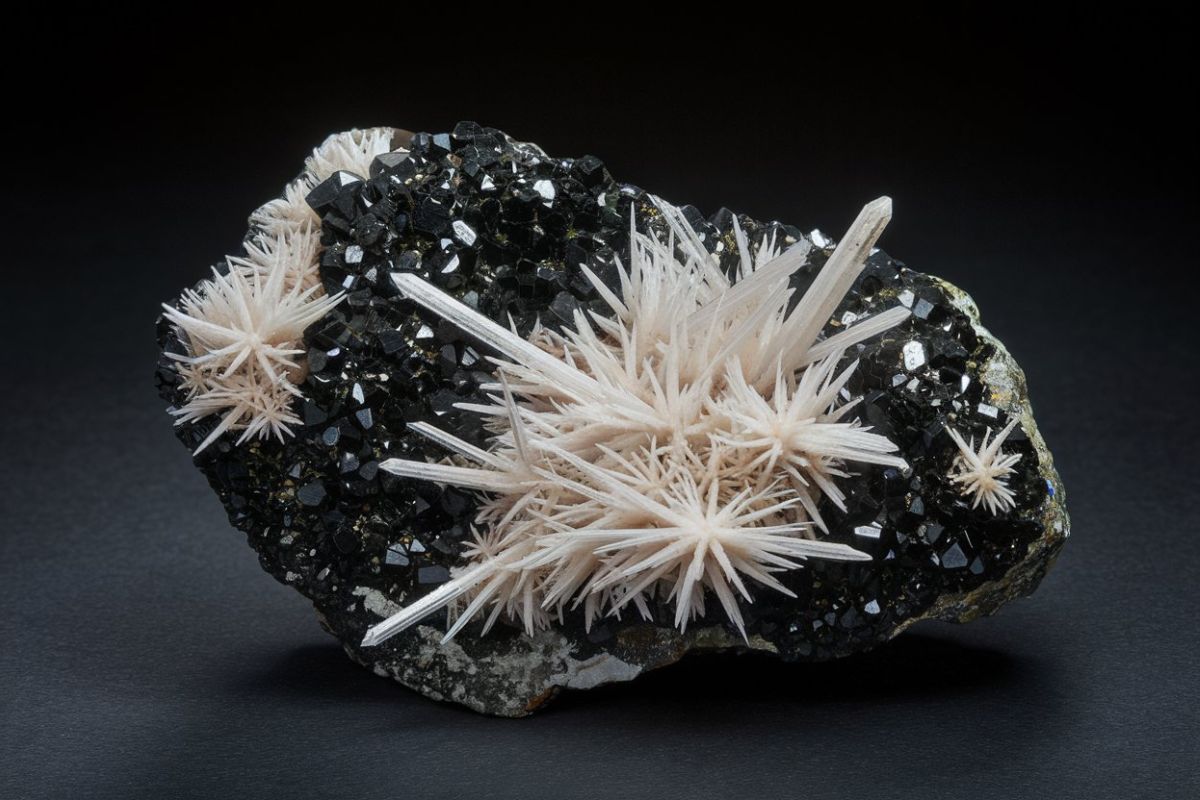
Cesanite is a rare mineral that often piques the curiosity of geology enthusiasts. Found primarily in Italy, this mineral is known for its unique crystal structure and striking appearance. But what exactly makes Cesanite so special? In this blog post, we'll dive into 20 fascinating facts about Cesanite, from its chemical composition to its uses in various industries. Whether you're a seasoned rock collector or just starting your journey into the world of minerals, these facts will give you a deeper appreciation for this intriguing substance. Ready to learn more? Let's get started!
Key Takeaways:
- Cesanite is a rare calcium silicate mineral found in Italy, known for its unique crystal structure and formation in hydrothermal environments. It has applications in geological research and industrial uses due to its calcium content.
- Cesanite's distinctive properties and formation process make it a subject of ongoing scientific research, with potential applications in environmental science and its value as a collector's item due to its rarity and unique crystal structure.
What is Cesanite?
Cesanite is a rare mineral that has intrigued geologists and mineral enthusiasts alike. Its unique properties and formation process make it a subject of fascination. Here are some intriguing facts about this mineral.
- Cesanite is a calcium silicate mineral, specifically a member of the silicate class.
- It was first discovered in Italy, near the town of Cesano, which is how it got its name.
- The mineral typically forms in hydrothermal environments, often associated with volcanic activity.
- Cesanite is known for its distinctive crystal structure, which can be prismatic or tabular.
- It often appears in colors ranging from white to pale yellow, though it can sometimes be colorless.
Chemical Composition and Structure
Understanding the chemical makeup and structure of Cesanite can shed light on its unique characteristics.
- Cesanite's chemical formula is Ca2SiO4(OH)2, indicating it contains calcium, silicon, oxygen, and hydrogen.
- The mineral belongs to the orthorhombic crystal system, which means its crystals are shaped like elongated rectangles.
- Cesanite has a hardness of 5 on the Mohs scale, making it relatively soft compared to other minerals.
- It has a specific gravity of about 2.8, which is a measure of its density.
- The mineral exhibits perfect cleavage in one direction, meaning it breaks smoothly along a specific plane.
Formation and Occurrence
Cesanite's formation process and where it can be found are equally fascinating.
- It forms in hydrothermal veins, which are fractures in rocks filled with mineral-rich water.
- Cesanite is often found in association with other minerals like wollastonite and diopside.
- The mineral can also form in metamorphic rocks, which are rocks that have been altered by heat and pressure.
- Significant deposits of Cesanite have been found in Italy, Japan, and the United States.
- It is often mined as a byproduct of other mineral extraction processes.
Uses and Applications
While Cesanite may not be as well-known as other minerals, it has some interesting applications.
- Cesanite is sometimes used in geological research to understand hydrothermal processes.
- The mineral can be a collector's item due to its rarity and unique crystal structure.
- In some cases, Cesanite is used in industrial applications for its calcium content.
- It has potential uses in environmental science, particularly in studying mineral deposits and their formation.
- Cesanite's unique properties make it a subject of ongoing scientific research, with new discoveries being made about its formation and characteristics.
Final Thoughts on Cesanite
Cesanite, a rare mineral, holds a unique place in the world of geology. Found primarily in Italy, it’s known for its striking blue color and complex chemical structure. This mineral, often overshadowed by more common ones, offers a glimpse into the Earth’s geological processes. Cesanite’s rarity makes it a prized specimen for collectors and researchers alike. Its discovery has contributed to our understanding of mineral formation and the conditions that create such unique structures. While not widely known, cesanite’s beauty and scientific value make it a fascinating subject. Whether you’re a geology enthusiast or just curious about the natural world, cesanite is a reminder of the hidden wonders beneath our feet. So next time you hear about rare minerals, remember cesanite and its special place in the mineral kingdom.
Frequently Asked Questions
Was this page helpful?
Our commitment to delivering trustworthy and engaging content is at the heart of what we do. Each fact on our site is contributed by real users like you, bringing a wealth of diverse insights and information. To ensure the highest standards of accuracy and reliability, our dedicated editors meticulously review each submission. This process guarantees that the facts we share are not only fascinating but also credible. Trust in our commitment to quality and authenticity as you explore and learn with us.
